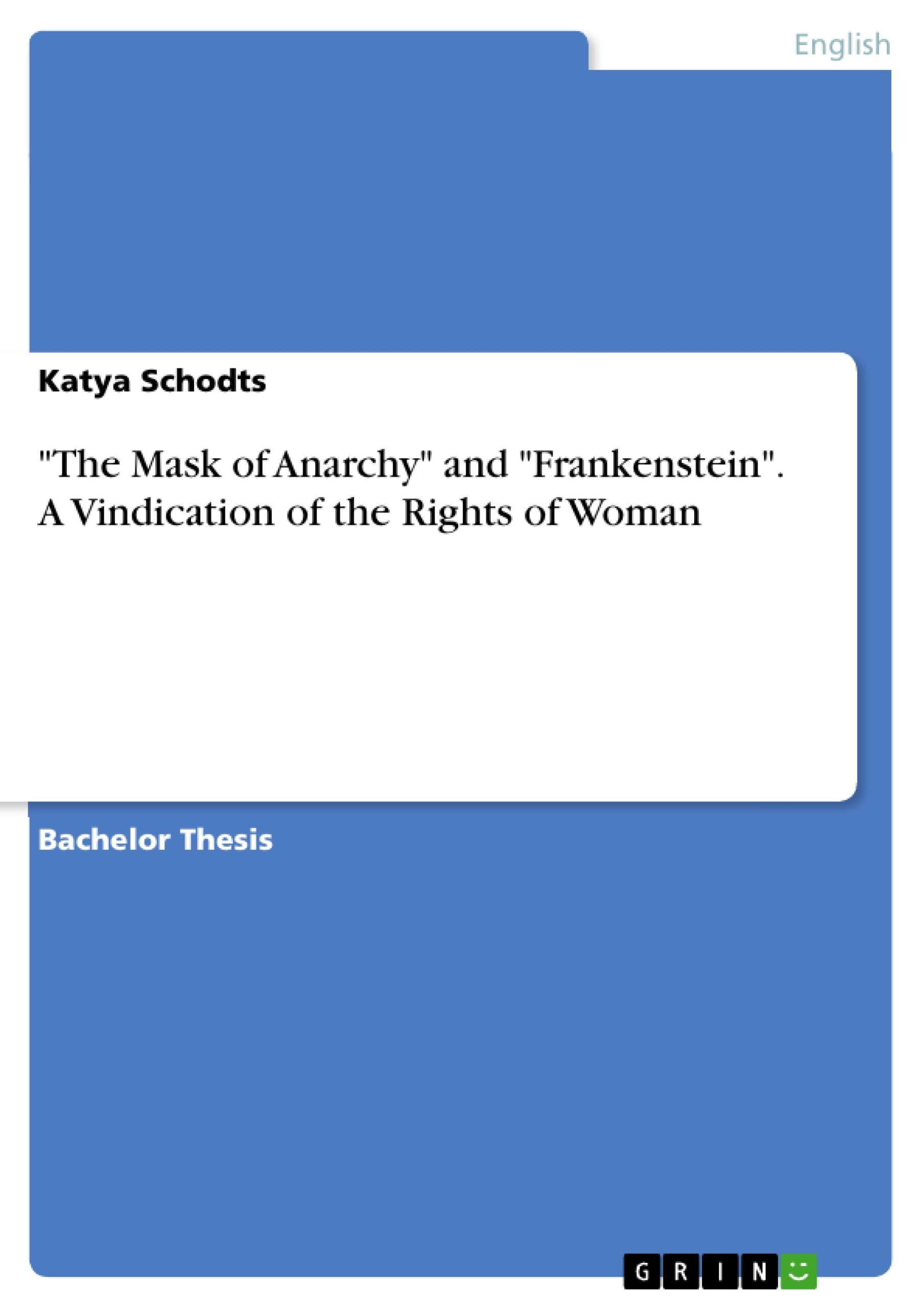When I read Percy Bysshe Shelley’s The Mask of Anarchy (The Mask) for the first time, I was immediately captivated by the important role that appears to be assigned to what Ashley J. Cross calls “a series of connected female figures”. A female Hope is given the strength to stop the excesses of an unjust society, and it is a female voice that calls upon the men of England to “Rise like Lions after slumber”. Apparently, The Mask’s men are passive. Father time waits “Fumbling with his palsied hands”, and the men of England have been chained while asleep. This sharply contrasts to how women and men are depicted in Frankenstein. The novel’s women largely comply with contemporary gender norms: passive, docile, and dependent daughters, sisters, wives and mothers who are confined to the domestic sphere. They are not given a voice and are recurrently depicted as victims of a society dominated by ambitious, active men. In The Mask, by contrast, women not only survive tyrants, but they also emerge as highly influential forces in the establishment of an imagined future egalitarian society.
Frankenstein has long been accepted as a novel that embraces women’s rights. Some critics have also read The Mask in the context of 19th century society and its attitudes towards gender. In my thesis, I will argue that both works incorporate a strong call for women’s rights and that in spite of a different approach, the similarities between them go far deeper than they appear on the surface. I will emphasize the influence of Mary Wollstonecraft’s ideas on both writings. They seem to have been an invaluable source of information and reveal an inextricable bond between The Mask, Frankenstein and Wollstonecraft’s writings.
Inhaltsverzeichnis (Table of Contents)
- Introduction
- Women in 19th Century England
- Mary Wollstonecraft
- The Mask of Anarchy and its Vindication
- The Maniac Maid and Peterloo
- The Maniac Maid and 19th Century Women
- Freedom and Universal Rights
- Joint Revolution: Call to Women and Men
- Frankenstein and its Vindication
- The Female Creature
- The Creature's Divide
- Hope and Despair
- The Family Unit
- The Mask and Frankenstein: a Vindication of the Rights of Women
Zielsetzung und Themenschwerpunkte (Objectives and Key Themes)
This thesis aims to demonstrate the feminist themes present in Percy Bysshe Shelley’s *The Mask of Anarchy* and Mary Shelley’s *Frankenstein*, arguing that both works incorporate a strong call for women’s rights. It examines the influence of Mary Wollstonecraft’s ideas on both writings, highlighting the similarities in their approach to gender equality despite their different styles.
- The influence of Mary Wollstonecraft’s *A Vindication of the Rights of Woman* on *The Mask of Anarchy* and *Frankenstein*.
- The role of women in 19th century England and their limited opportunities.
- The portrayal of women in both texts and their potential for agency and influence.
- The connection between societal injustice and the oppression of women.
- The power of language and narrative to challenge established power structures.
Zusammenfassung der Kapitel (Chapter Summaries)
The introduction sets the stage for the thesis, highlighting the feminist themes in both works. It explores the role of women in 19th century England and introduces the importance of Mary Wollstonecraft’s ideas as a point of reference.
Chapter 2 explores the situation of women in 19th century England, focusing on the limitations imposed by patriarchal societal structures and various discourses on ideal womanhood. It examines the impact of religious, legal, and medical discourses on women’s lives and their limited access to education and economic opportunities.
Chapter 3 provides an overview of Mary Wollstonecraft’s life and work, focusing on her contributions to the feminist discourse and her critique of patriarchal societal structures. It examines her argument in *A Vindication of the Rights of Woman* about the rationality of women and the importance of providing them with equal rights.
Chapter 4 analyzes *The Mask of Anarchy*, focusing on its feminist themes and its call for a more egalitarian society. It explores the role of women in the poem and their potential for leading social change, emphasizing the importance of female agency and their power to inspire men to action.
Chapter 5 explores *Frankenstein* through a feminist lens, examining the portrayal of women in the novel and the potential for female agency despite their seemingly passive roles. It focuses on the female voice in the novel and its critique of patriarchal power structures.
Chapter 6 draws a comparison between *The Mask of Anarchy* and *Frankenstein*, highlighting the similarities in their feminist themes and their shared connection to Wollstonecraft’s ideas. It examines how both works contribute to the larger discourse on gender equality and the need for social change.
Schlüsselwörter (Keywords)
The main keywords of this thesis include feminism, gender equality, women’s rights, 19th century England, Mary Wollstonecraft, *A Vindication of the Rights of Woman*, *The Mask of Anarchy*, *Frankenstein*, patriarchal society, female agency, societal injustice, social change, and narrative power.
- Arbeit zitieren
- Katya Schodts (Autor:in), 2015, "The Mask of Anarchy" and "Frankenstein". A Vindication of the Rights of Woman, München, GRIN Verlag, https://www.grin.com/document/310818



